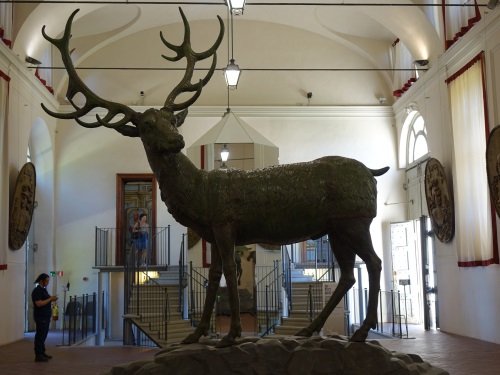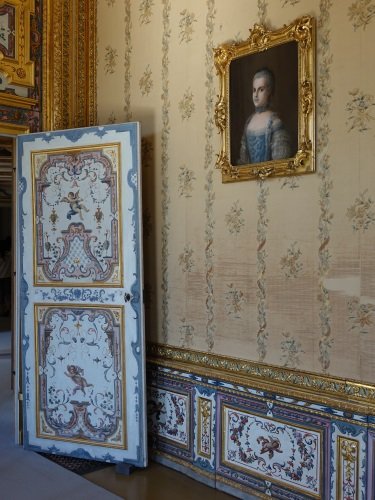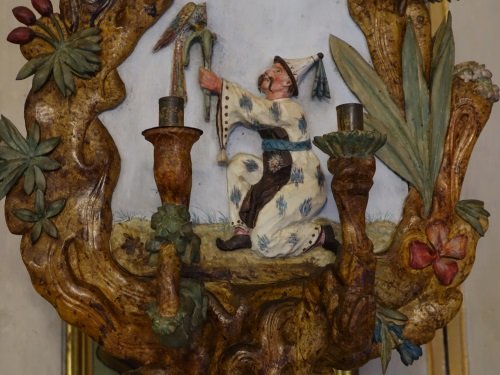The
Palazzina di Stupingi
is one of the 23 inscribed
Residences of the Royal House of Savoy
. It’s a former hunting residence, commissioned by Duke of Savoy
Victor Amadeus II
and built between 1729 and 1733. The architect Filippo Juvarra was responsible for designing this residence or little palace (hence: ‘palazzina’).

|
|
The original bronze deer that stood on top of the Palazzina
|
Stupinigi nowadays is a suburb of Turin: the palace lies some 10km from the city center. Among the Savoy residences, it is one of the later ones. It dates from the period that the court started incorporating parts of the countryside into their domain. For the purposes of entertainment and hunting, they created a so-called “ring of pleasure” around their capital.
I took a taxi to Stupinigi from my Turin hotel near the train station, and 20 minutes later (and 20 EUR poorer) I was dropped off at the entrance of the palazzina. I visited in the late afternoon, hoping to avoid the peak of the summer heat and visitor crowds. It was very quiet, there were maybe only 10 other tourists around. I seriously doubt this site ever gets really busy: it’s too much off the beaten track for that. The first impression is a Versailles-like structure, with a huge deer statue on top to indicate the original purpose of the building. Familiar, but a bit quirky too.

|
|
A familiar European palace decoration
|
The royal family of the Duchy of Savoy invited friends and acquaintances here for hunting - the no. 1 pastime of the European elite. In the 18th century Stupinigi was a wooded area, so there were plenty of deer to hunt. In the decoration of the interior the hunting theme is continued. The original bronze deer that stood at the highest point of the roof of the palace can be seen (the one now at the top is a copy). Antlers feature prominently in several of the rooms.
Two rooms of the castle are dedicated to another popular hobby of the late 18th century: Chinoiserie. Fake Chinese wallpaper, screens, and candlesticks with stereotypical Chinese figures are its remaining examples. It’s all very much over-the-top and shows the rococo style of the furnishings.
After a short walk in the disappointing gardens, I had to get back to the city center. There was no taxi in sight, so I walked the whole driveway of the castle (about 2 km) unto the main road. There is a bus stop, but buses seemed to run infrequently on Sundays. So I continued on foot along the very long Corso Unione Sovietica to the nearest subway station. It is located in the Olympic quarter of 2006, when the Winter Olympics were held here. For future visitors I’d recommend renting a bike to get to Stupinigi: the tree-lined roads straight from the centre are easy to follow.

|
|
Chinoiserie
|
Visiting a country residence like this one is a good addition to the innner city Savoy palaces such as Palazzo Reale and Palazza Madama, which I visited already in 2013. Unfortunately it also suffers from high entrance fees (I paid 15 EUR!) and a not overly friendly reception that regard non-Italian speakers as a nuisance. The entrance fee includes an audio guide. It provided good quality explanations in English, but I had to surrender my passport as a deposit (which isn’t good practice at a government-owned institution in a developed country).



